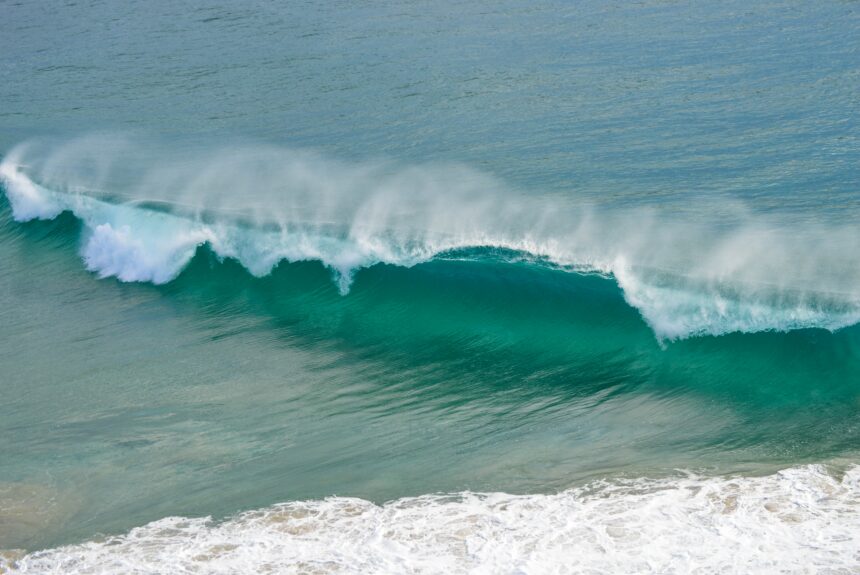The ocean is our planet’s greatest carbon sink, responsible for absorbing more than 30% of carbon dioxide (CO2) from the atmosphere. Covering more than two-thirds of the Earth’s surface, the sea offers a tremendous opportunity to meaningfully reduce emissions. While the ocean’s natural process of carbon capture is not fast enough to absorb all of the CO2 emitted from industrial processes, one company has found a way to speed up this nature-based carbon removal solution with carbon mineralization.
>>>READ: A Startup Wants to Make the Ocean Into a Larger Carbon Sponge
Vesta, a San Francisco-based ‘enhanced rock weathering’ startup is using a negative emissions technology known as Coastal Carbon Capture (CCC). Vesta exploits the natural process of chemical weathering and carbon mineralization to permanently sequester CO2. To accelerate the rate of carbon dioxide absorption by the ocean, Vesta plans to dump carbon-removing sand composed of the mineral olivine at strategically important coastal areas and beaches in the Middle East, where the mineral is found abundantly. There, the ground-up olivine will gradually dissolve in seawater, triggering a series of chemical reactions that pull carbon dioxide from the air and lock it away for good in the shells and skeletons of marine-calcifying organisms. The process has the added bonus of reversing ocean acidification and restoring fragile coastal ecosystems.
The firm has identified the Persian Gulf as the ideal site to deploy its carbon mineralization methodology, due to its just-right oceanographic conditions and large deposits of naturally-occurring olivine. CEO of Vesta Tom Greene believes his company could eventually remove at least one billion tons of carbon dioxide per year through coastal carbon capture.
“Olivine is one of the most abundant minerals on Earth. It has naturally sequestered CO2 from the atmosphere for billions of years and enabled life to thrive…Through the global supply of olivine, along with technological development in recent decades, we have more than enough olivine reserves, mining capabilities, and applicable coastlines to bring CCC to the gigaton scale,” Vesta writes on its website.
At full scale, Vesta expects its CCC carbon credits to cost around $10 a ton, or about one-tenth of the price of other carbon removal technologies on the market (The firm currently advertises carbon credit services for as little as $35 a ton). Vesta’s approach is also efficient. For every ton of CO2 emitted from the extraction and transportation of olivine, Vesta captures 20 tons of atmospheric CO2, according to its website. By using the ocean for its carbon mineralization solution, Vesta can ensure that the offsets and credits they provide are both legitimate and effective, which are two features that are critical to the success of voluntary carbon markets.
>>>READ: Elevating the Standards for Carbon Offset Projects
Vesta has already conducted pilot experiments to test out its technology in the Caribbean and in the Hamptons. Because CCC is a relatively nascent technique, monitoring the ecological impact of ocean mineralization is important. To that end, Vesta has been closely studying a range of marine life in its test sites to investigate any potential environmental side effects associated with spreading large amounts of olivine along coastal zones. The firm found no “adverse ecological effects” at its pilot beach in the Hamptons. Vesta also controlled for the presence of trace metals and bio-essential nutrients in oyster and phytoplankton populations and observed no risk to sea life, even at high concentrations. Other studies on the effects of olivine exposure on marine microbes similarly reveal no harmful side effects. However, Vesta continues to carefully monitor the impact of olivine dissolution on organisms and ecosystems in collaboration with scientists.
Vesta is one of a number of promising ocean carbon removal companies. In 2021, two university professors from Caltech founded Captura, a Direct Ocean Capture technology company that aims to filter CO2 from seawater using a patented electrodialysis process developed at Caltech. Captura has a pilot plant in California and a full-scale aquatic purification facility in the works. Last year, the climate tech startup was awarded $1 million from Elon Musk’s XPrize carbon removal competition. Captura went on to secure more than $12 million in funding in a highly successful Series A round held in January.
Other up-and-coming ocean-powered carbon removal startups include Ebb Carbon, the brainchild of former Tesla, SolarCity, and Google X executives, and Equatic, a startup spun-off from UCLA. In April, Ebb Carbon’s electrochemistry-based deacidification system raised $20 million in a Series A funding round, the largest investment in ocean-based carbon removal technology to date. Meanwhile, 2021-founded Equatic scored a major deal with aerospace giant Boeing in May. Under the five-year arrangement, Boeing will purchase 2,100 metric tons of “green” hydrogen from Equatic that it can use to develop sustainable aviation fuel (SAF). Boeing will also purchase 62,000 metric tons’ worth of carbon credits from Equatic to offset some of its emissions.
As global warming accelerates, solutions that supercharge the natural carbon-capturing properties of seawater will be central to meeting the world’s climate ambitions. When it comes to the burgeoning field of ocean carbon removal, the private sector is turning the tide on climate change.
Nathalie Voit is a freelance content creator and a graduate of the University of Florida. She is an alumni of The Heritage Foundation’s Young Leaders Program.
The views and opinions expressed are those of the author’s and do not necessarily reflect the official policy or position of C3.
